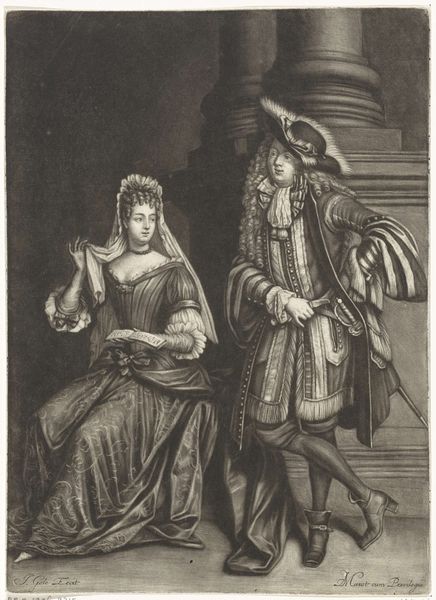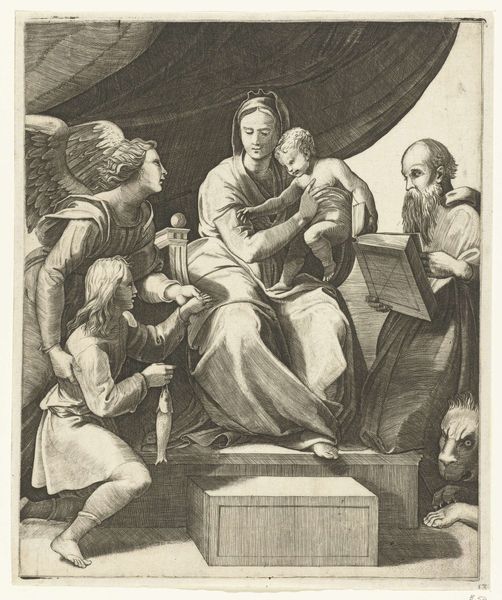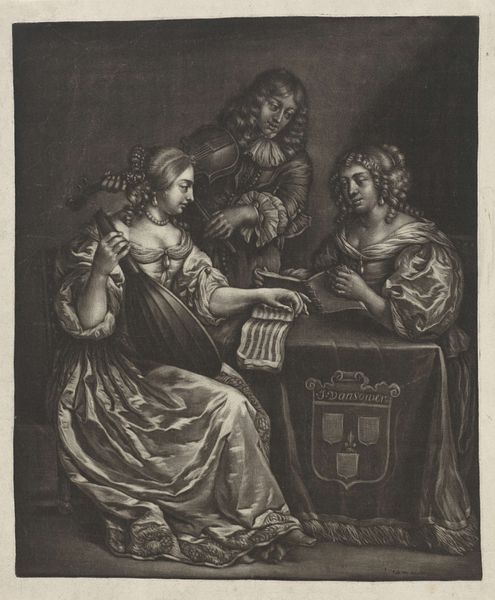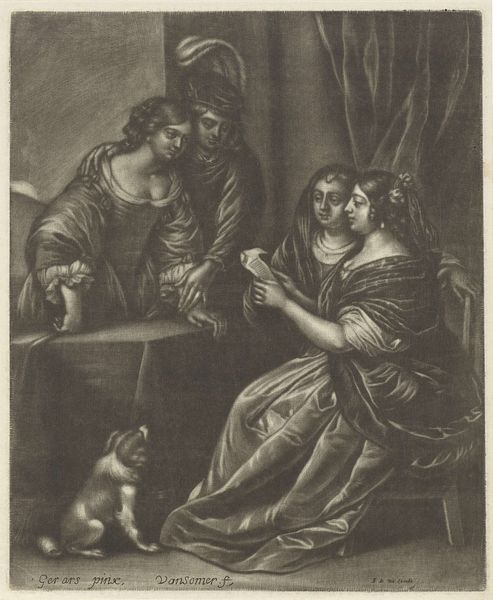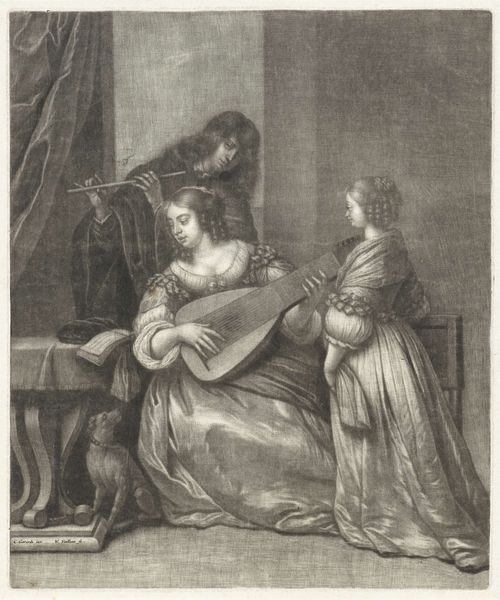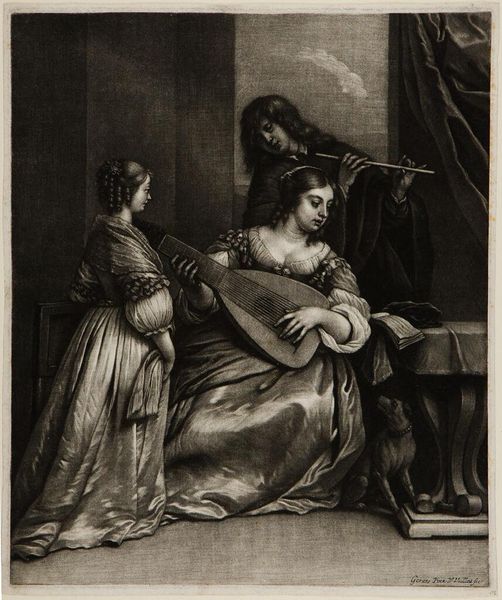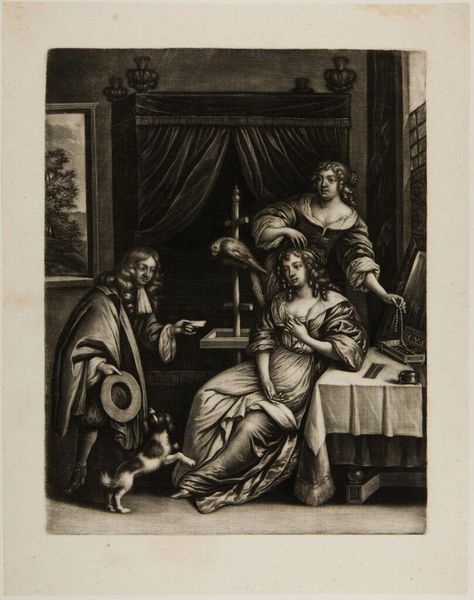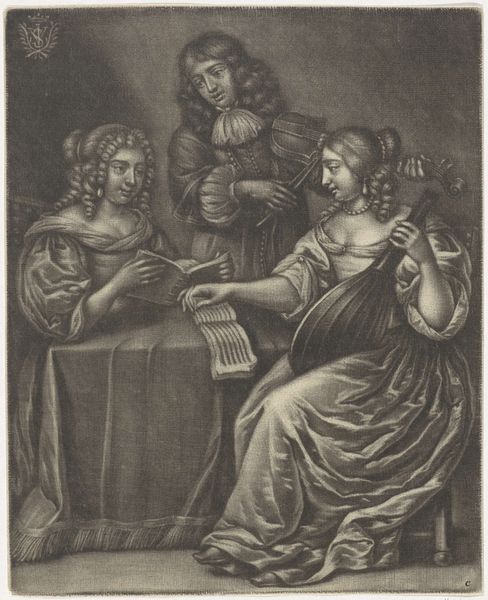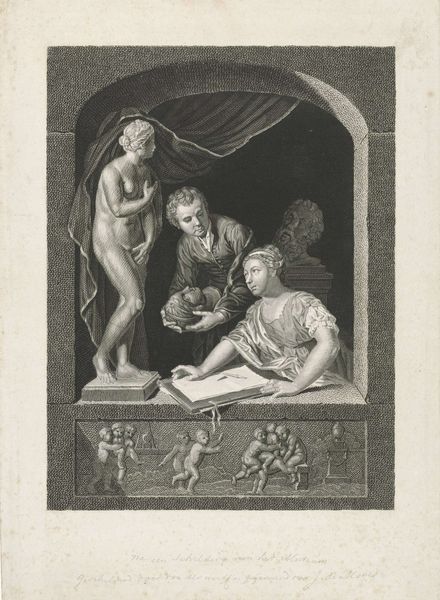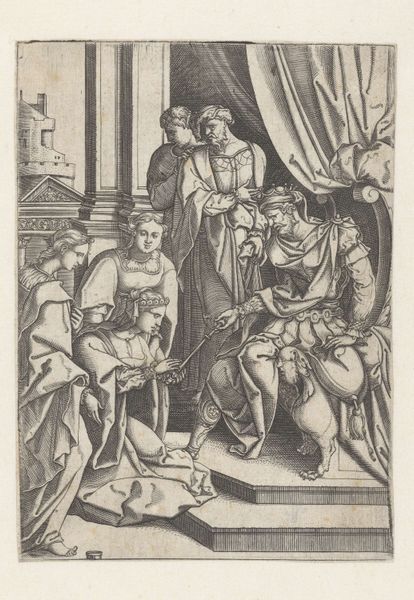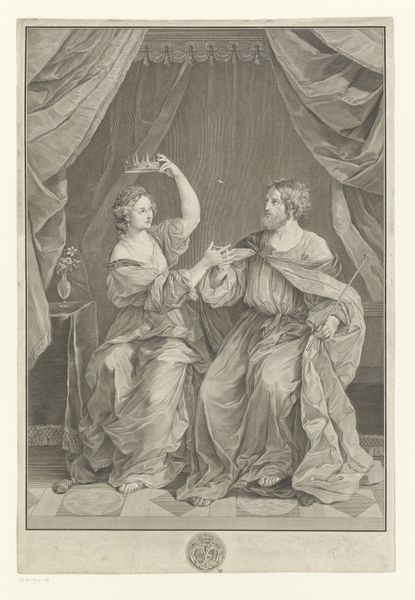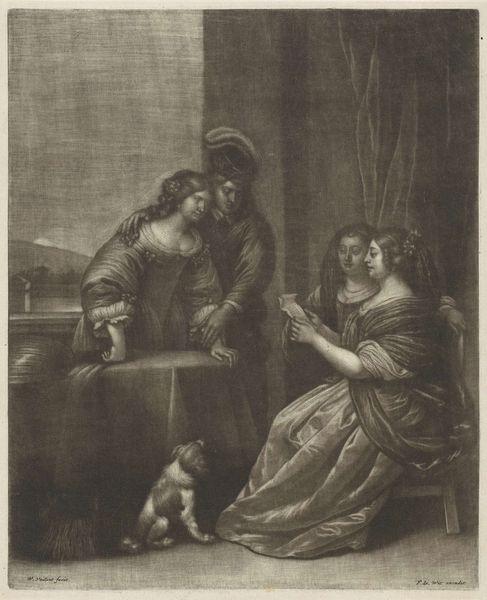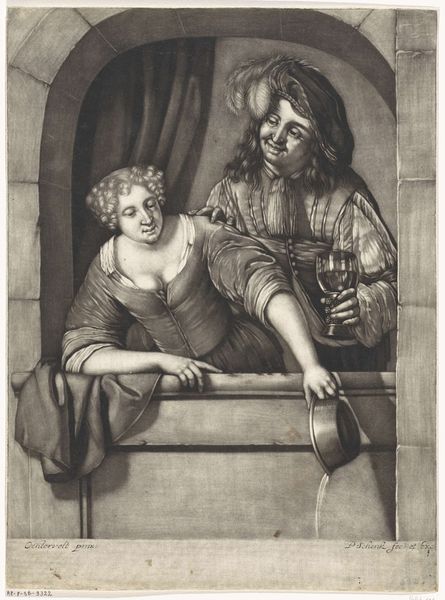
print, engraving
#
portrait
#
baroque
# print
#
old engraving style
#
charcoal drawing
#
figuration
#
group-portraits
#
genre-painting
#
engraving
Dimensions: height 259 mm, width 214 mm
Copyright: Rijks Museum: Open Domain
Editor: Here we have Wallerant Vaillant’s "Meisje met een violoncel," dating from somewhere between 1658 and 1677. It’s an engraving, so a print, and it depicts a woman holding what I think is a cello, accompanied by two other figures. What strikes me is how this relatively reproducible format portrays what seems to be a domestic scene of bourgeois music-making. What can you tell me about this piece? Curator: Well, I immediately key in on that description, Editor, about this being reproducible. Engravings such as this made art accessible and acted as a vital form of communication. In terms of materiality and means, it's an extremely efficient method of distributing images that previously would've been restricted to paintings owned by a wealthy few. How do you think this piece challenges distinctions between high art and, say, more functional forms of image-making? Editor: That’s interesting – I hadn’t thought about it that way. So the very nature of it being a print challenges what we consider high art. I guess, traditionally, the value would’ve been in an original painting but here that value shifts toward broader access and distribution of cultural symbols? Curator: Exactly! We have to consider who was consuming these prints, and where. Were they displayed prominently as emblems of cultural capital? Or were they circulated, copied, perhaps even used as models by craftspeople for other purposes? Examining the physical life of an object—its production, circulation, and consumption—reveals the web of social relations embedded within it. Think about the materiality of the ink, the paper… Editor: Right, the labor involved in producing the engraving… so different from oil paint on canvas. This has definitely changed my perspective on the artwork. I'm starting to appreciate that this piece can't just be analyzed as a depiction, it's the artifact's biography itself. Curator: Precisely! The "what" and "how" of its making matters just as much as "why" it was made, maybe even more.
Comments
No comments
Be the first to comment and join the conversation on the ultimate creative platform.

